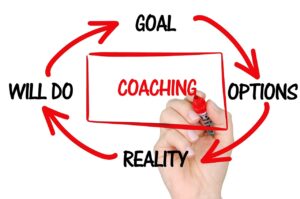What are trauma effects on mindset? This is an important question when dealing with business coaching, as many of the struggles clients have relate to mindset, which trauma heavily impacts. Trauma is a fact of life – both major trauma and “little t” trauma.
Dr. Peter Levine says “traumatic symptoms are not caused by the event itself. They arise when residual energy from the experience is not discharged from the body. The energy remains trapped in the nervous system where it can wreak havoc on our bodies and minds.”
Three main types of traumatic events exist.
Table of Contents
ToggleThree Categories of Trauma Creating Trauma Effects
1. Acute Trauma
Acute trauma most often results from one-time events such as acts of violence and war, a car accident, severe injury, assault, rape or natural disaster.
The single event is intense or extreme, and threatens your emotional and physical security.
2. Chronic Trauma
Chronic trauma is trauma that occurs over a long period of time. Some examples include long-term illness, sexual abuse, domestic violence, bullying and exposure to extreme situations such as wartime combat.
Multiple instances of acute trauma can become chronic trauma.
3. Complex Trauma
Finally, complex trauma. Complex trauma is the result of exposure to a variety of multiple traumatic experiences, often in the context of interpersonal relationships.
It often makes the person feel trapped, and may be seen in individuals who have been victims of childhood abuse, neglect, domestic violence or other ongoing situations, such as civil unrest.
Many survivors of complex trauma lack awareness of having been traumatized because their experience was “the norm” for them, and a single event may not stand out. Complex trauma impacts a person’s mind and ability to function. It affects overall health, relationships and performance at work and school.
Other Types of Trauma
It’s also important to be aware of different types of trauma that occur based on identities, relationships and everyday life experiences. Intergenerational trauma is significant trauma passed on through generations. Racial and ethnic trauma involved experiences of discrimination, prejudice, racism or systematic oppression based on racial identity, ethnicity and or culture.
Indirect trauma, also called secondary or vicarious trauma, occurs when someone who supports or cares for others who have experienced trauma also experiences trauma related symptoms. This is in response to helping or empathizing with others who have experienced trauma.
What are trauma effects?
Trauma, especially consistent trauma, can have an adverse effect on our autonomic nervous system. And our autonomic nervous system, which is designed to protect us, if activated enough, will want to protect us all the time.
Different Parts of the Nervous System
The nervous system includes several components (credit).
The body’s nervous system is made up of two major parts, the central nervous system (which includes the brain, cerebellum, and the spinal cord), and the peripheral nervous system (which includes nerves). These two parts of the nervous system act jointly to assure your body is communicating all of its sensory information and needs.
In this post, we’re concerned with the peripheral nervous system, which includes four parts: somatic nervous system autonomic, and the autonomic nervous system. And the autonomic nervous system is divided into two parts:
- sympathetic nervous system
- parasympathetic nervous system
Sympathetic and Parasympathetic Nervous System
Have you ever heard of “fight or flight response”? This relates to your nervous system, and how it impacts your reactions which are driven by survival. But, our nervous systems are a little more complex than that.
- Sympathetic Nervous System: The sympathetic nervous system stimulates what is known as the fight or flight response in the body. It prepares the body’s energy for stressful or energy-exerting activities.
- Parasympathetic Nervous System: The parasympathetic nervous system, on the other hand, works to conserve energy. It signals the body to conserve its energy while it sleeps and relaxes. It includes two critical nerves: the dorsal vagus nerve and the ventral vagus nerve.
Trauma Effects When the Dorsal Vagus Nerve is Activated
The dorsal vagus nerve is the oldest part of the autonomic nervous system, and it exists to help us preserve energy and protect us from psychological and physical pain.
Normally, the dorsal vagus serves a very positive function. (Source.) It helps the body gently pendulate between arousal and relaxation. However, when the sympathetic system is too aroused, the dorsal vagus nerve can shut down the entire system and we go into freeze: or a “freeze” response.
Our sympathetic nervous system is what’s commonly known as the “fight or flight” response. It picks up on danger and motivates us to take action in order to create safety (the opposite of “freeze”).
There is also a fourth trauma response that is recently being recognized – “fawn“. This is a combination of “fight or flight” (action) and “freeze” (inaction) where we seek to be safe by accommodating the needs or demands of other people.
How do Nervous System Responses Relate to Mindset in Your Business
So, how does the nervous system relate to mindset and success in your business?
Traumatic experiences that create trauma responses can make our nervous systems less flexible.
When your nervous system is flexible, you can move easily between a stressful event, back into a relaxed state.
When you have a dis-regulated nervous system caused by trauma, you might stay on constant high alert, looking for danger, and often experience anxiety. The sympathetic nervous system, which controls your “fight or flight” response, is designed to protect us by maintaining awareness of danger.
But if the sympathetic nervous system is constantly activated (as can happen with trauma) and doesn’t find an actual threat, you can perceive danger from things that are otherwise neutral. This causes your cortisol to go up, and can stay up chronically, and is part of what can lead us to feeling “burned out”…
…Anyone relate?
This constant state of fight or flight makes your business really freaking hard.
- It’s harder to make decisions and feel confident in them
- It’s more stressful to show up, because we don’t feel safe
- It’s harder to invest in ourselves, because the investment can put us outside our window of tolerance
While you can grow a successful business in a dis-regulated state, you will eventually reach a bottom.
I see this all the time, and saw it again just recently.
Leverage Your Nervous System To Grow Your Business
Vagal Nerve and Trauma Effects: Activate Your Vagal Nerve
The ventral (front) side of the vagus nerve responds to cues of safety in our environment and interactions. It supports feelings of physical safety and being safely emotionally connected to others in our social environment. (Source)
Our ventral vagus nerve feels more like connection, play, ease, and typically associated with what we know as “flow state.”
Most people also associate these calm, safe inspired feelings with wealthy people. Activating your ventral vagus nerve is what helps you to be “high vibration” and/or getting in a higher frequency.
You’ve probably heard the saying, or maybe you’re hearing it for the first time now:
Growing your business requires you to change who you’re BEING and not just what you’re DOING.
This quote might sound WOO to you, but the science behind it is: this refers to getting into your ventral vagal state. The ventral vagus nerve communicates from the body to the brain, and from the brain to the body. And get this: 80% of the ventral vagal nerve fibers send information from the body to the brain and only 20% of its fibers send information from the brain to the body.
You need to involve your WHOLE body.
This is why traditional mindset like assessing limiting beliefs and creating affirmations for NEW beliefs is helpful – but it’s not ENOUGH for complete healing and consistent up-leveling.
What Does It Mean to Have a Flexible Nervous System
In order to have more ease and flow in your life AND business, it’s helpful to have a flexible nervous system. What does that mean?
When I first saw this statement on Instagram, I was intrigued and it clicked right away. But, when I wanted to learn more about this, I couldn’t find any information online. The interesting thing is that trauma and the effects of trauma is a relatively new science. Since beginning my ICF accredited trauma-informed coaching certification, I’ve learned more words, tools and resources. But to me, this is the blog post I wish I had.
Having a Flexible Nervous System Involves Creating Safety in Your Body
Your goal is to be able to move easily from dorsal (the old part of your brain that causes freeze and tries to protect you from pain), to sympathetic (the part of your brain that picks up on danger and triggers you to take an action like fight or flight), to to ventral (the part of your brain that makes you feels safe and “in flow”), more easily.
Some Example Effects of Disregulated Responses
- Overthinking decisions (dorsal)
- Paralyzed with fear at the idea of hiring that new coach (dorsal)
- Needing to know the how before you know the what (dorsal)
- Whether to turn on the paid ads or not (dorsal)
- Frantically checking sales stats (sympathetic)
- Throwing money at a problem that causes stress (sympathetic)
- Answering emails at 2am (sympathetic)
- Frantically putting out fires (sympathetic)
5 Steps to Soothe Your Nervous System
What are ways to soothe your nervous system? There are 5 steps below to soothe your nervous system.
- Create more safety in your body
- Practice exercises that increase resilience
- Learn to feel emotions
- Learn to tune into your body
- Create a routine for consistency
#1: How to Feel More Safe in Your Body
- Wrapping Up in a Cozy Blanket: maybe you keep on in your car or office, or just use one at home. I love having a super fluffy blanket in my home office
- Safe environment: create a sanctuary at work or home that makes you feel safe and joyful. If you don’t have control over your space, consider adding a couple elements that you enjoy: a candle, a paper organizer, colored pens, etc.
- Positive memory resourcing: compile a list of memories that feel amazing to you, and intentionally savor one. Think about what it felt like, smelled like, looked like.
#2: Increase Resilience
- Cold showers: consider ending your shower starting with 15 seconds of cold water and building as you feel able to
- Breathwork: I’m obsessed with Wim Hof’s breathing exercises, and recently discovered DMT breathing as well
#3: Learn to Feel Emotions
- Intentionally tune in to how you feel: when you’re tempted to check social media, try opening up your Notes app and check in with your body instead
- High frequency playlist: Create a playlist of songs that you’re obsessed with that make you feel calm, excited, playful, alive.
- Feel: Instead of being afraid of how you feel, or running away from anxiety, lean in and intentionally feel the feeling. NOT the thoughts – sit with how it feels in your body. Consider asking a trusted friend to witness you
#4: Learn to Tune into Your Body
- Loud, audible breath out.
- Do something just for fun.
- Mindful movement: walking, dancing, free body movement or a gym workout.
#5: Create a Routine
Soothing your nervous system and resolving trauma effects requires consistent practice and increasing your window of tolerance.
My best advice for helping your nervous system become more flexible involves creating a routine. With clients, I call this a mindset routine. And the exercises listed above become a part of that routine.
You might call this a daily quiet time, or a mindfulness practice, etc. But the bottom line is: choose a couple exercises above that feel a little challenging, but also manageable, and do them every day until you feel the need to change it up.






